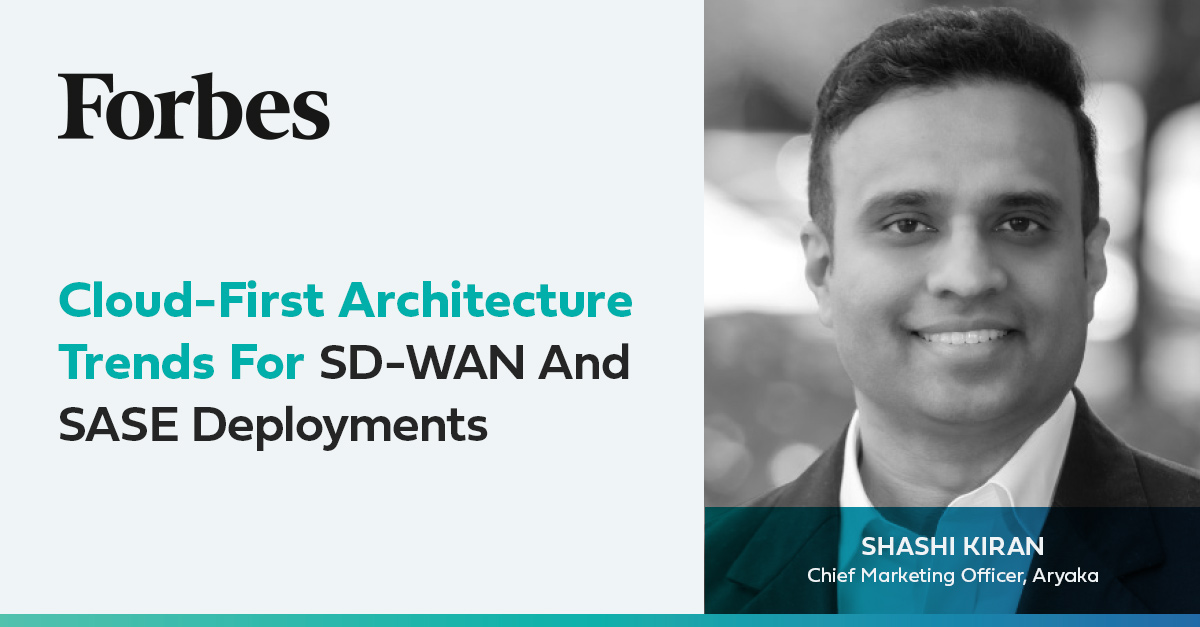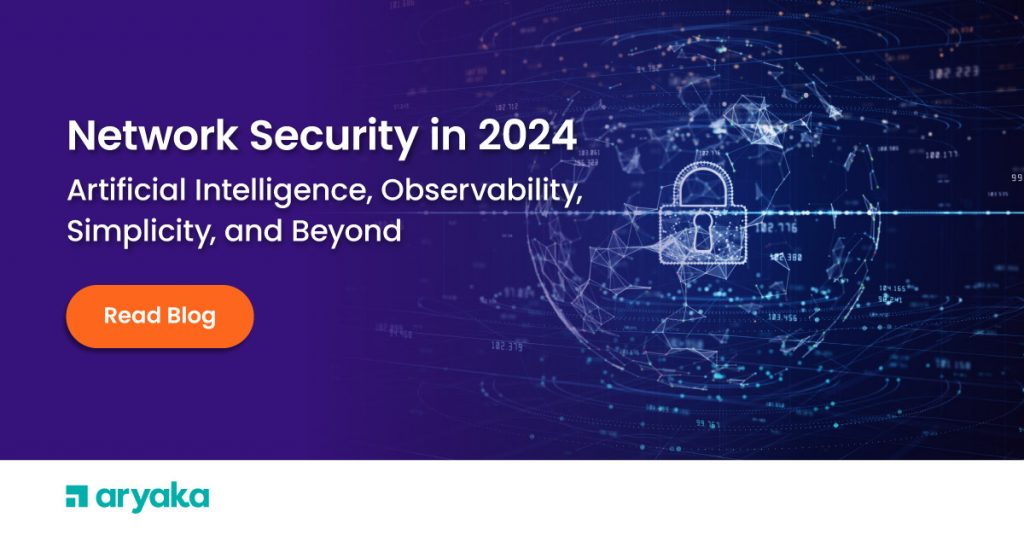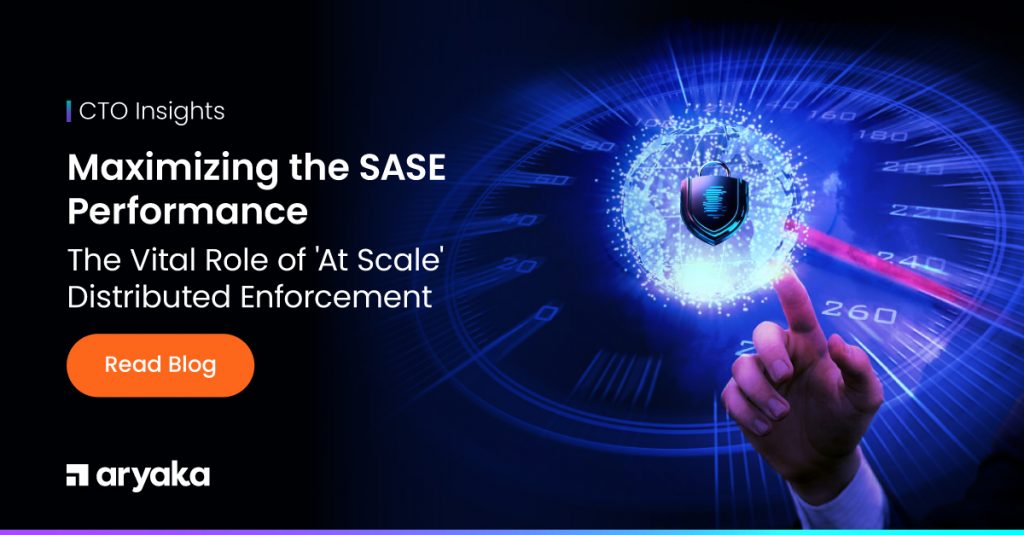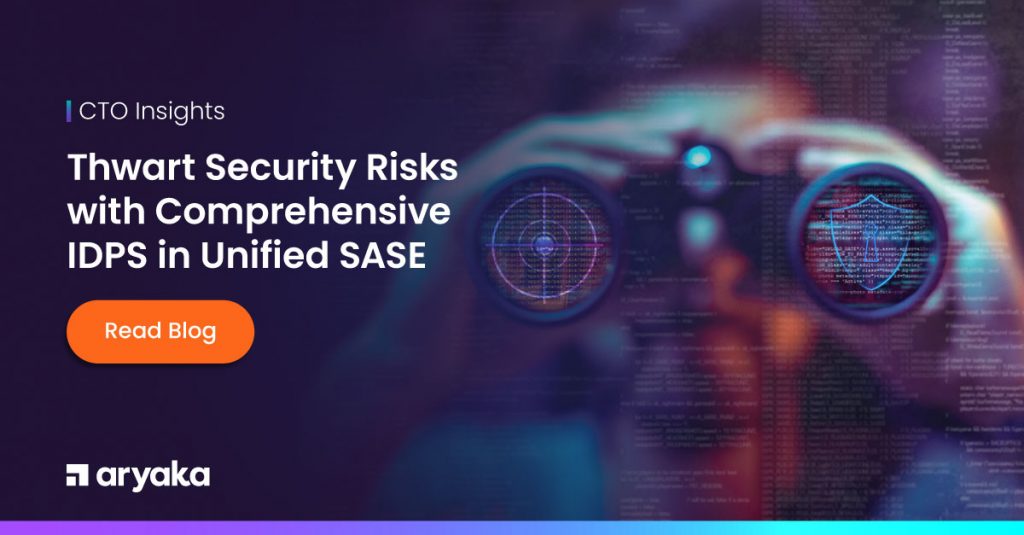Cloud-First Architecture Trends For SD-WAN And SASE Deployments

CMO at Aryaka Networks. Advisory Board member for the Fabric, Ushur, TrueLark, various startups. Former global marketing leader at Cisco.
Recently, I was asked to share some thoughts on the wide-area network (WAN), and in particular, trends on software-defined WANs (SD-WANs) and emerging concepts like secure access service edge (SASE). While this may appear like gobbledegook to some, for professionals engaged in transforming their wide-area networks, these are highly relevant topics.
I’d like to draw from conversations I’ve had with my company’s customers and partners globally. There are a number of good data points.
Interestingly, if I were to contrast this with similar conversations from last year, the pandemic has accelerated a number of trends that were three to five years out and deferred others that we thought were imminent.
As they plan for the post-pandemic era, CIOs and even CEOs are more focused on architectures and investments that help them manage change better and increase business agility while continuing to lower costs.
Here are five things that are top of mind:
1. We see a dramatic adoption of the cloud-first WAN. Our customers and prospects continue to adopt consumption-based models focused on network and network security delivered as a service. Many enterprises are shifting away from traditional MPLS networks that are considered somewhat rigid and quite complex. “Cloud-first” doesn’t imply “public cloud only” but rather architectures that emphasize ease of use, consumption-based as-a-service models that focus on the operator and user experience.
2. Boundaries between office and home working environments are blurring. This requires architectural flexibility to support hybrid workplaces for both on-site and remote users regardless of location or corporate application they are accessing. There is considerable focus on enhancing productivity for the “anywhere worker.”
3. While enabling such a hybrid workplace environment, highly predictable application performance is critical to ensuring employee productivity and facilitating effective collaboration. End-to-end service level agreements with visibility across — and ownership of — the last mile, the midmile and cloud networks become important to deliver on that application experience. Providers with a WAN-optimized private backbone and the capability to manage these end-to-end networks from the cloud to edge are highly differentiated. The right architectures bring the predictability of application performance like traditional MPLS networks and combine it with the agility of traditional SD-WANs on the internet to deliver true cloud-first WANs.
4. All this has intertwined networks and network security. We’re seeing a greater percentage of our customers engage in conversation for network, firewall and private access solutions as a converged offering. The expectation is that all this would be delivered as a service for their sites and users, regardless of on-premises or cloud applications.
5. All this is leading to an increase in complexity as enterprises bring the network, cloud, applications and network security together. CIOs don’t see the do-it-yourself (DIY) model scaling well and don’t want to throw people everywhere, and they’re looking at operational simplicity. This is leading to the adoption of managed services worldwide. We see integrated architectures that support a fully managed SD-WAN and managed SASE as high-growth areas.
Moving away from a DIY model may not be immediately intuitive to organizations that view it as having more control of their operations. CIOs who are experiencing some limitations of the DIY model or those evaluating new solutions would do well to assess their current posture with some of the following questions to see if the managed SD-WAN or managed SASE trend would work for them:
• Is building, operating and maintaining your own network simple enough? Is there relevant expertise available?
• Is managing change easy? Is coordination required between multiple vendors to deploy or resolve an issue? Is there sufficient visibility provided?
• What is most important: lower capital expense, lower operating expense or lower total cost of ownership? While the DIY model with boxes may appear cheaper to buy, is it more expensive to operate in the long run? Is it possible to model it out for a three- to five-year period to understand the true nature of costs?
• Is it the best use of time for the talent in the organization? Can these resources be freed up to focus on higher-value tasks that drive transformation with greater responsiveness?
• Is a managed offering adding to the risk or eliminating risk? How and why?
CIOs would do well to discuss the implications with their teams, get their buy-in and make this a core component of their organizational strategy. It will help drive the cultural alignment and eliminate the fear factor among certain employees who may view this as a job threat.
The above considerations are good to bear in mind in such planning exercises.
As we look ahead, the writing on the wall is quite clear. 2021 should see a greater emphasis on cloud-first architectures as many CIOs seek to evaluate next-generation requirements in the post-pandemic era. It is time for every enterprise to do a holistic assessment of their current architecture and where they want to be five to 10 years from now and start moving in that direction accordingly.
This article was originally published on Forbes.
- Aryaka AppAssure
- Aryaka FlexCore
- Aryaka HybridWAN
- Aryaka Secure Web Gateway
- Aryaka Regional Solution Brief
- Aryaka SmartCDN
- Accelerate CAD/CAM Performance with SD-WAN
- Accelerate Salesforce Performance with SD-WAN
- Managed SD-WAN as a Service for 8x8 UCaaS
- Advantages of Cloud-First WAN Services
- Amazon Web services Acceleration







